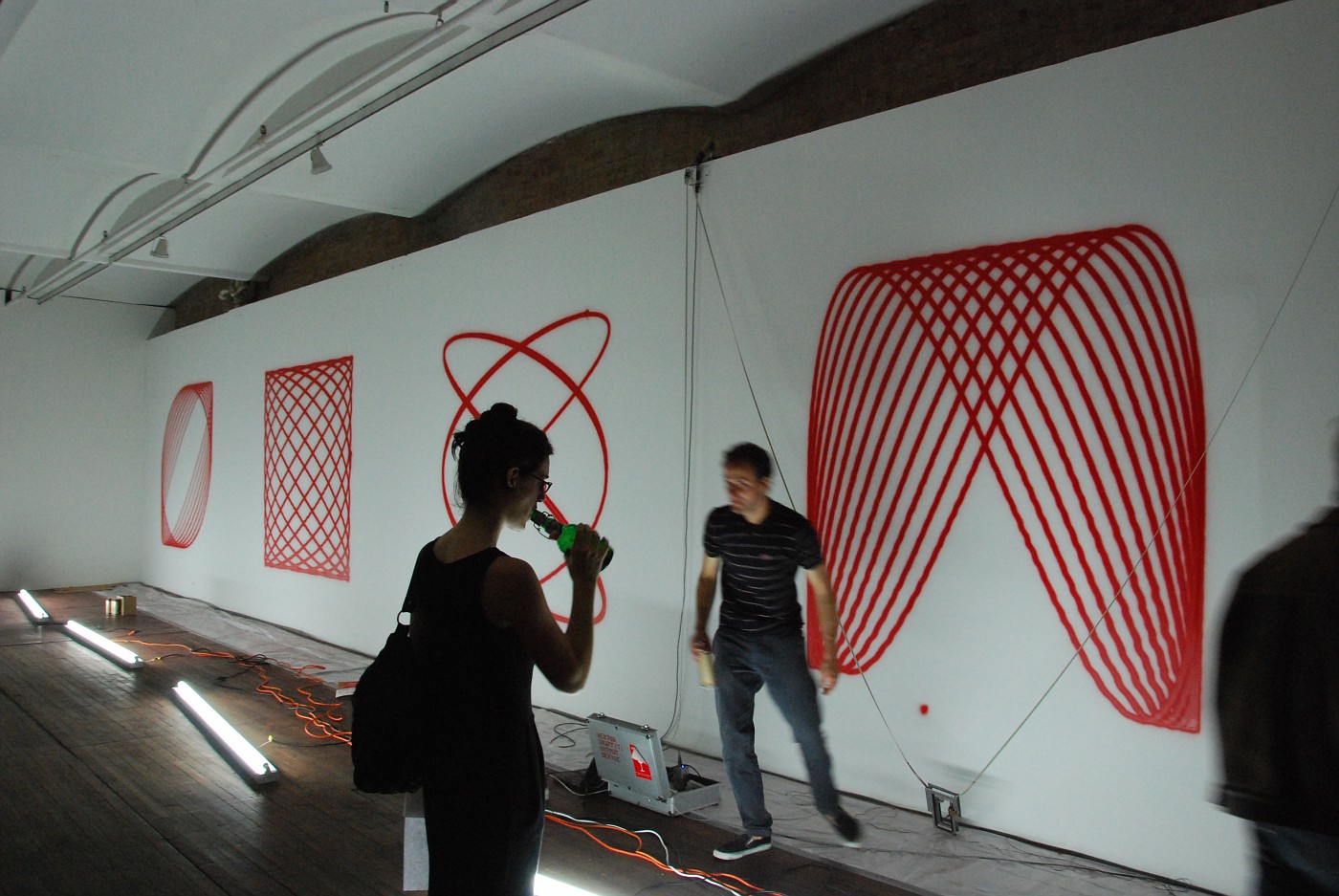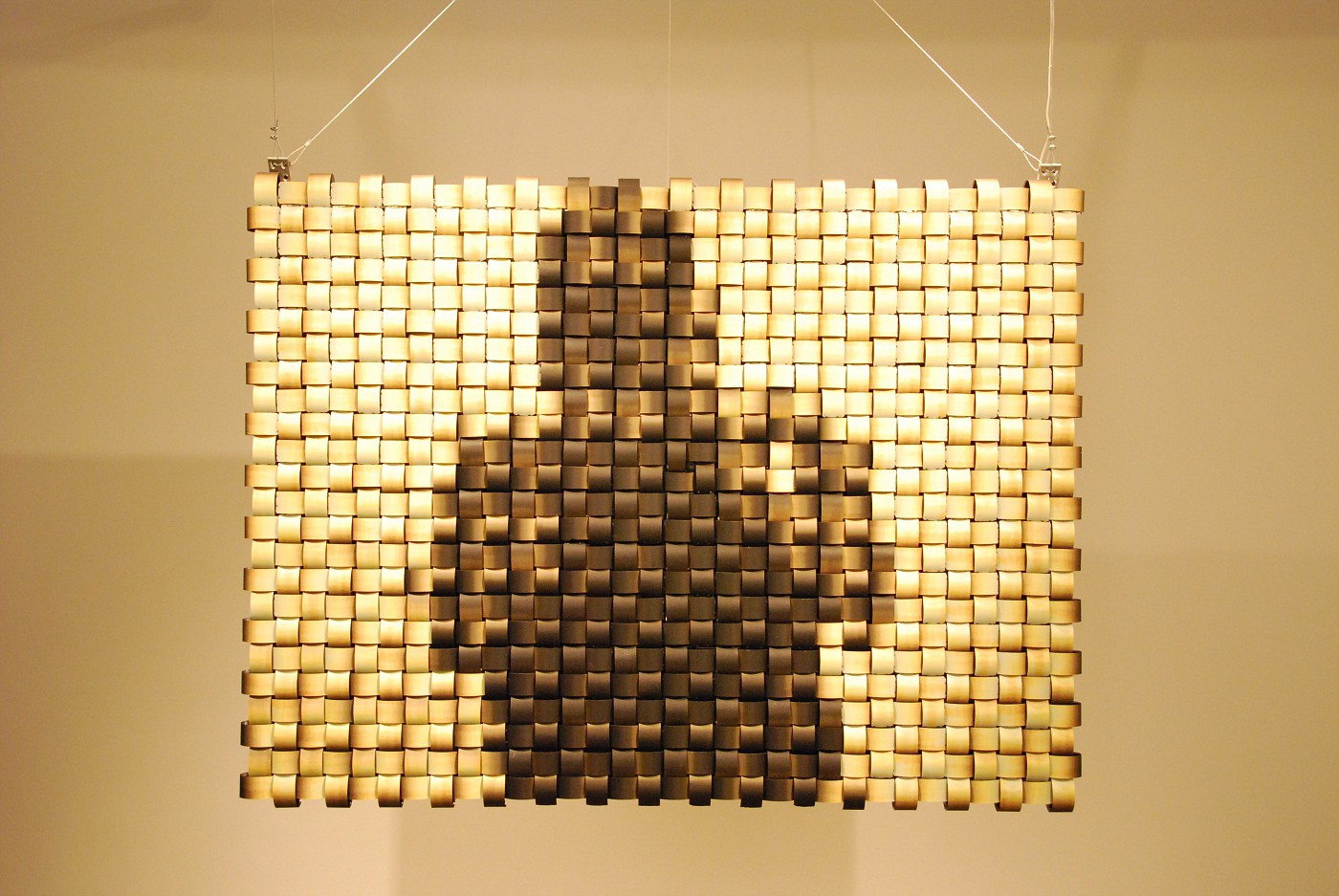This week I saw a couple of interesting shows: Hektor, the Swiss graffiti-painting robot/installation created by Jürg Lehni, and some of the new mirrors by Danny Rozin.
Hektor is a system for painting with spray cans, using two precisely controlled motors to pull the can back and forth with wires. When I saw Hektor in Tokyo last year, it was using photographic portraits as the source for the imagery. At the Swiss Institute event, mathematical functions conceived by Dexter Sinister were the input, yielding very clear simple Lissajous figures. A great addition, which I had not seen before, was to place microphones next to the control motors, and play back the heavily amplified sounds through powerful speakers. While Hektor was painting, this led to very powerful throbbing/groaning/hissing sounds, clearly connected to the process of painting.
This all took place during “The Big Blowup”, the busiest night of the year for art gallery openings in New York, so there were a lot of people, and something of carnival atmosphere. Here’s David Byrne’s take on it. Later that week, I went to see Danny Rozin’s new works at Bitforms.
Danny specializes in “mirrors”, works that take a live camera input and reflect it back through a variety of innovative, and usually physically intriguing, displays. He showed three new works, the “Peg ” mirror made of wooden pegs, the “Weave” mirror emulating basketwork and a video mirror called “Snow”. I was keen to see his new “Weave Mirror”, since he’d been working on it all summer at ITP and I’d seen it gradually come together. It did not disappoint – the picture below shows me reflected in it, taking a picture:
Both “Hektor” and Rozin’s mirrors have a lot in common: they are carefully crafted works, reflecting considerable engineering input, that also *perform* – they can only be fully appreciated when fully functional. Both of them rely for their impact on transforming their input, and presenting it in an unexpected medium, ie. Hektor takes photographs and math functions, and paints them as graffiti; Danny’s mirrors take a video input and show them using wooden blocks, slices of parchment, etc.
It would be interesting to see both works interpret the same input, and see what they come up with. After all, Hektor’s Tokyo show (portraits) was a kind of very slow mirror. Danny’s pieces can represent any input – not just live video.


